
VETTA F. VICTI
WITTA SON OF WECTA
c. 350 A.D.
( Vetta, Wetta, Vitta, Witta )

erhaps the oldest written evidence of the name Witzel can be found in the north of England. At least one historian suggests that it might be in Kirkliston that a fallen hero was remembered.
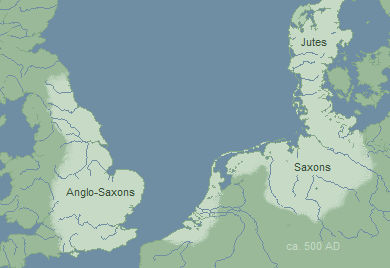
Our name finds its roots among the Angle-Saxon-Jute people, usually known as Anglo-Saxons in England and Saxons (Sachsen) in northern Germany. These groups were very closely allied and, to some degree, form a single unit. These Saxons were among the last Germanic groups to adopt a formalized system of writing. It is likely that our ancestral name, in some form, was known among them and passed orally from generation to generation, and clan to clan. However, it is not until more advanced neighboring cultures begin to write about them that we gain any conclusive understanding.
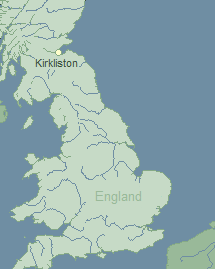
So, the story begins with the collision of two expanding worlds. The Saxons are migrating to lands that are being vacated by the Romans in England and the Franks in northwestern Germany. And at the same time, Christian missionaries are reaching outward from Rome in their attempt to tame the wild frontier.
The monks bring with them the magic of writing. As time goes on, their documents and histories become increasingly more common. They begin to mix the ancient Celtic and Saxon ways with the new Faith. In Ireland, Scotland and England, there is a slow establishment of the Irish and Anglo-Saxon monastic orders. Their accounts are nearly all we have to tell us about the Neolithic bands of warriors that were once our Saxon forefathers.
Still, the first notable event in our chronicle is supported by histories that date to a much later time. It is not to be found upon some ancient scroll. Instead, our first record is a crude inscription chiseled upon a large, rounded, memorial stone found in Kirkliston, Scotland. In 1861, Sir James Young Simpson wrote a book entitled The Cat-Stane, Edinburghshire: is it not The Tombstone of the Grandfather of Hengist and Horsa?. � �This stone quite possibly bears the first permanent evidence of the Anglo-Saxon name Witta. Though, like most histories of this time, the book does have its critics, Simpson's presentation is nonetheless quite convincing.
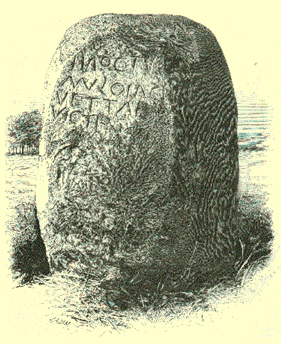
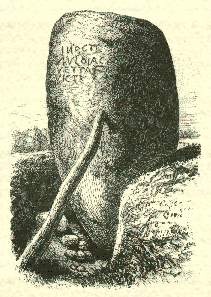
Simpson compares the inscription that is found upon the stone to a written passage found in the famous Historia Ecclesiastica, written by Bede around 731 A.D. Simpson quotes a section that describes the Anglo-Saxon migration to England: '(Their) leaders were two brothers, Hengist and Horsa, who were the sons of Victgils, whose father was Vitta, whose father was Vecta, whose father was Woden, from whose stock the royal race of many provinces deduces its origin.' It is Nennius who writes in his Historia Brittonum, c. 800 A.D., 'They were commanded by Horsa and Hengist, brothers, and sons of Wihtgils. Wihtgils was the son of Witta; Witta of Wecta; Wecta of Woden; Woden of Frithowald; Frithowald of Frithuwulf; Frithuwulf of Finn; Finn of Godwulf; Godwulf of Geat ...' �
Various versions by various writers � � are compared to prove the existance of variations in spelling of the list of names. Until, finally, Simpson concludes the Latin inscription on the Cat-Stane - IN OC TV MVLO JACIT VETTA F. VICTI, which translates as In this tomb lies Vetta, son of Victi - � refers to the same Anglo-Saxon leader Witta described by Bede and his contemporaries.
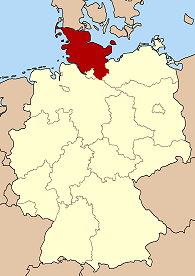
Simpson also suggests the very strong possibility that Witta was present in Scotland as the leader of the Saxon warriors who had allied with the Picts in a war against the Roman General Theodosius I in 368 A.D. And that it is here that Witta dies in battle and is commemorated by this stone.
Even if Simpson's theory were to be incorrect, we do learn from this knowledgeable debate that the Anglo-Saxon name Witta is firmly associated with the migrating tribes moving westward. It seems safe to infer also that the name Witta is likely to have been known as far east as what is now the state of Schleswig-Holstein, the original Saxon homeland in northern Germany.
10-08-2006
� |
The Anglo-Saxon Chronicle. c. 890. Online Medieval and Classical Library. Last retrieved on October 8, 2006. http://omacl.org/Anglo/. � � |
� |
'LNFYL/1'. Last retrieved on October 8, 2006. http://www.ucl.ac.uk/archaeology/cisp/database/stone/lnfyl_1.html. � |
� |
Nash-Williams, V. E. The Early Christian Monuments of Wales. Cardiff: University of Wales Press August, 1950. � |
� |
Nennius. History Of The Britons (Historia Brittonum). Early Medieval Britain and Ireland. Last retrieved on October 8, 2006: http://www.postroman.info/nennius/historia_brittonum8.htm. � |
� |
Simpson, Sir James Young. The Cat-Stane, Edinburghshire: is it not The Tombstone of the Grandfather of Hengist and Horsa?. Edinburgh: Neill And Company. 1861. Online version: Ogimos Press. 2001. Last retrieved on October 8, 2006: http://www.cyberscotia.com/ogmios/texts/simpson/catstane/catstane.html. � |
� |
'Sir James Young Simpson'. The Gazetteer for Scotland. Last retrieved on October 8, 2006: http://www.geo.ed.ac.uk/scotgaz/people/famousfirst60.html. � |

� Home � Site Menu � Contact �

